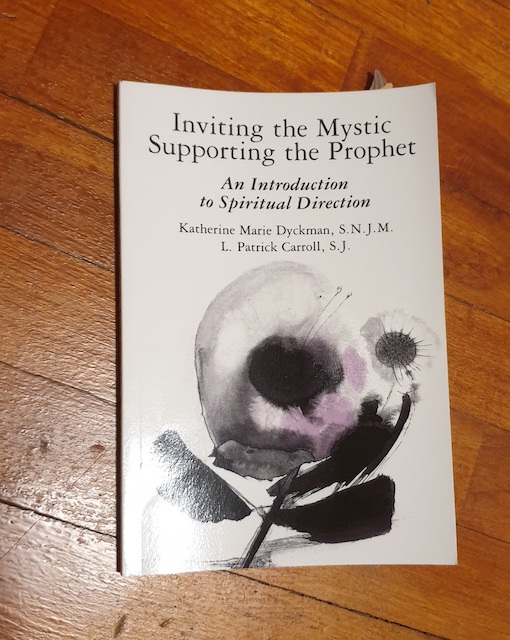Initially I was intrigued by the title. It stoked my curiosity. As I read the foreword and introduction, I felt drawn to the authors’ thesis as it was something I wholeheartedly agreed with: the tests of authentic prayer are in the fruit of the praying life or community. I was interested in the relationship between prayer and service, the mystic and prophet.
I was not disappointed as the authors describe the symbiotic relationship between the mystic and the prophet in the believer’s life. “The starting point is not as important as that the circle be complete: prayer leading to life, and life leading to prayer. Real prayer lead to involvement; real involvement leads to prayer. Deeper spirituality impels to action; action impels to deeper spirituality, and the circle continues and deepens. The mystic becomes prophet, the prophet becomes mystic” (Dykman & Carrol, 80). For me it has been deeper prayer leading me to more involvement in life and service, and I must concede that deeper involvement in service had driven me often to God in helplessness and hope. It drew me more into prayer.
Spiritual Direction
I liked the authors’ description of spiritual direction. It was not narrowly confined to the guided development of the directees’ prayer life, but a journey with them in their faith development, which includes conversion, struggle, integration, awareness of reality, and a call to radical love. The call to radical love would include immersion in works of service, justice and compassion. “All these holy people are holy not just because they pray or write eloquently about that prayer, but because their prayer leads them to respond to Christ in the given historical cultural moment. All of them respond in a unique way to unique situations in which they find the Lord calling to his people. But all respond outside themselves in service. Each mystic becomes a prophet”(Dykman & Carrol, 82). This reminded me how this emphasis on mission and service is so similar to Ignatian spirituality. Ignatius’ Spiritual Exercises led people into an experience of forgiveness of sins, and commitment to Christ, and a life of service and praise to the Creator and Redeemer.
Dark Night or Desert Experience
I found the chapter on PRAYING THROUGH THE DESERT is particularly enlightening. The authors gave two descriptions of the desert experience in prayer: one from St John of the Cross, the 16th Century mystic and poet, and another through Thomas Merton a 20th Century mystic and poet. St John of the Cross described three signs in prayer that indicated that God was inviting a person to deeper levels of prayer. First, one experiences the frustration and lack of satisfaction from discursive meditation which majored on study, analysis, and abstractions. Words, thoughts, concepts, principles does not quench the spiritual thirst. Second, one finds it challenging to focus or a particular subject or fix the imagination. The logical is dead, the intuition is alive. Third, despite difficulties in prayer, one still had the desire to be with the Lord, to have solitude and prayer. Even though God seems far away. The wise counsel of St John of the Cross is for the spiritual director to help direct to look at his or her larger context and entire life, to see how God had been active and working in and around him or her. “We cannot judge our prayer, whether it be consoling or desolate, by how we feel when we pray, but rather by how we are loving when we live” (62). A person’s prayer life may be desert-like but an examen of his life may reveal God’s loving activities and presence in many areas of his life of service. This helps him see that God’s love is as strong as ever and that the desert may be God’s way of moving on the purification of his faith in and love for God and not the result of his sin.
Thomas Merton demystified the term. Merton sees in what he prefers to describe as a “desert experience”, a call to be faithful to a life of prayer despite spiritual dryness and blandness. It required a faith that was unsupported by a sense of God’s presence, a faith that blindly, faithfully, persistently continues its quest of intimacy despite dryness, feeling of hopelessness, meaninglessness and even discouragement and anguish. Often the person in the desert will blame himself for “moving away from God” through his sin, idols or failures. He or she needs a director to discern God’s loving and quiet action in the larger perspective of a whole life, not just the current period of desert experience.
I enjoyed this book and found myself underlining many sentences and paragraphs. These definitely deserve further study, reflection and meditation.
